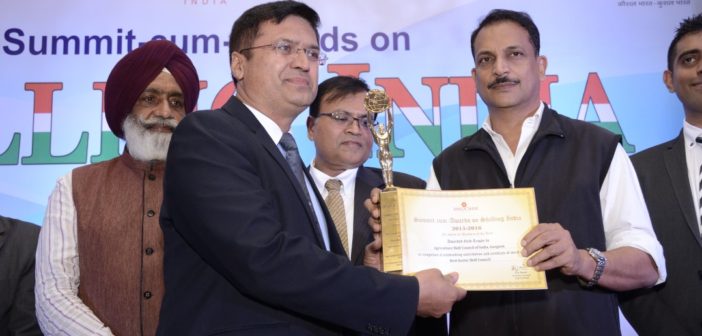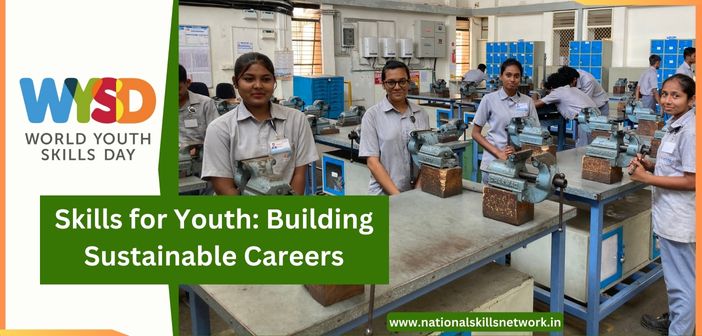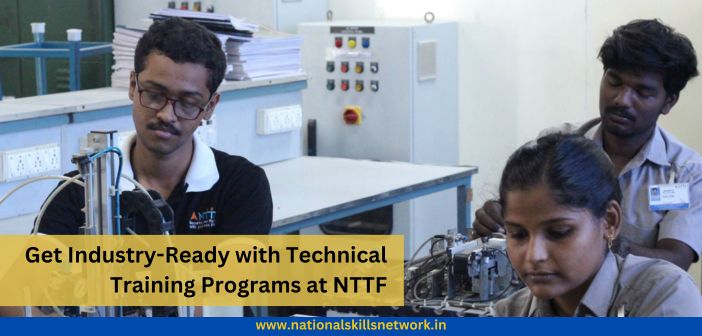With 98% of the sector being predominantly unorganized, training interventions in agriculture call for creating awareness about the need for skilling and upskilling among rural youth. How do we make farming and allied professions aspirational and reduce migration of farmers? Questions such as these get addressed in this Skill Story as Dr Satender Arya, CEO, Agriculture Skill Council of India (ASCI), delves deeper into the impact of their initiatives in agriculture and allied industries.
Agriculture Skill Council of India – ASCI was formed in 2013 as the 13th sector skill council to address the end-to-end skilling needs in a sector that employs more than 50% of the workforce. Though there are large number of people engaged in agriculture, the actual number of people actively involved is on the decline, apparently from 250 million to 119 million over next 7 years. This makes it imperative to look into the need for training, productivity enhancement and better outcomes.
There are three reasons for this phenomenon: First, in the increase in population, by nearly 5 crores a every year affects the agricultural land. It’s like a double whammy when cities expand at the cost of agricultural land leading to sharp reduction in agricultural production.
Second, there is hardly any knowledge transfer through traditional modes. Gone are the days when kids used to spend time with their parents in the fields to learn how sowing is done, how harvesting is done, how things move from farms to mandi (market place). It is a known fact that the Indian agriculture system has been able to reach only 6% of the targeted segment. There is no exposure to the new systems being used and getting skilled is becoming more important and critical.
Third, educating youth in farming practices is a global challenge. One of the ways to make it aspirational, particularly for rural youth is to blend it with technology, perhaps through farm mechanization techniques. The youth can also explore entrepreneurship as not all the people can be absorbed in wage jobs in India. It is better to be earning Rs.10000 to Rs 15000 per month in a familiar environment than migrating and earning Rs 20000 per month in an unfamiliar urban setup.
 Impact of ASCI in agriculture and allied industries
Impact of ASCI in agriculture and allied industries
In addition to impacting one lakh people through various programs , we have trained 1,37,000 under the PMKVY scheme and another 23,000 people through RPL for PMKVY. We have developed 116 Qualification Packs (QPs) for various job roles covering agriculture, horticulture, diary, poultry, fishery, apiculture, agro forestry, water management, post-harvest (agri-supply cold chain).
Besides the flagship programs of central government, we are also engaged with the state skill missions which include UP Skill Development Mission, Kerala, Himachal Pradesh State Skill Mission, MoU with West Bengal and Rajasthan – through training and certification. Agriculture is being introduced as a vocational subject from standard 9 to 12 in 533 different schools across 5 states under Rashthriya Madhyamik Siksha Abhiyan (RMSA) Program. B.Vocational programs are being run in 50 community colleges where agriculture programs are taken in at various levels like certificate, diploma, advanced diploma.
When we started our journey, we didn’t have trained trainers, now we have almost 700+ trained trainers, 600 assessors as well. We are operating in all the 29 states in India and also conduct assessments in 11 regional languages. First, we developed the QPs, now we have our model curriculum and we have reached the third stage of developing our training content.
How farm mechanisation can help
Low cost farm mechanisation, for example, a rice planter can take away the backbreaking pain of labour intensive activity like planting rice. Or, people don’t know how to maintain their tractors and use it smartly with fuel efficiency. Farmers need to be oriented about green house and micro irrigation. They also need to explore high value sub-segments of agriculture like dairy, poultry, fishing. For instance, considering India’s long coastline, how do we bring about a blue revolution that can feed millions.
Handling migration issues
Skill development will increase productivity which automatically translates into income enhancement. In rural areas, if people are ale to get more output and better incomes, they may stop migration. India is all about small farmers with less than 0.5 hectares of land. For sustainable agriculture, it has to be supplemented by some other source of income – which can be dairy, poultry, fisheries – so that the farmers are ensured of regular income. If the monsoon has failed and if there are other sources of income, he can fall back on these sources. So they need to be skilled in allied sectors of food processing,
The agriculture value chain
The decline in numbers in agriculture has a commensurate growth in horticulture, poultry and other value segments. The entire value requires people. People get absorbed in these sub-sectors – it could be sorting and grading vegetables. It’s not just paddy and wheat there are cash crops like sugarcane and cotton. Also there are spices of high valueforming the extended value chain.
Skilling for agricultural exports
Training is an integral part for equipping the workforce to improve the product not only for domestic market but also for export market. For meat export, the animals have to be raised properly. Milk production should be done with high professional standards with maintain hygiene levels. A mango with a spot may be acceptable to us, but not for exports. We need to have top class packaging, storage to ensure the fruits/vegatables are not spoilt and meet international norms. People need to have appropriate skills to reduce wastage or deterioration of quality of the produce.
ASCI – the road ahead
Agriculture is a vast segment, we are trying to reach multiple stakeholders through skill advisory workshops and awareness creation programs. We are able to demonstrate ways in which we can align with the the skilling initiative of the government for training the candidates and trainers through TOT sessions. We are expanding and engaging with new industries that form the agricultural cold chain such as cold store operators and controlled atmosphere operators.
We have to be positive about what has been achieved and what more can be achieved. Everything in skill development cannot be achieved overnight, we need multiple validations, many things are happening for the first time. In fact, the curriculum is designed for the first time. We’ve been one of the best performing sector skill councils, we even got an award for it!













Sir namaste
Skill india me job chahiye